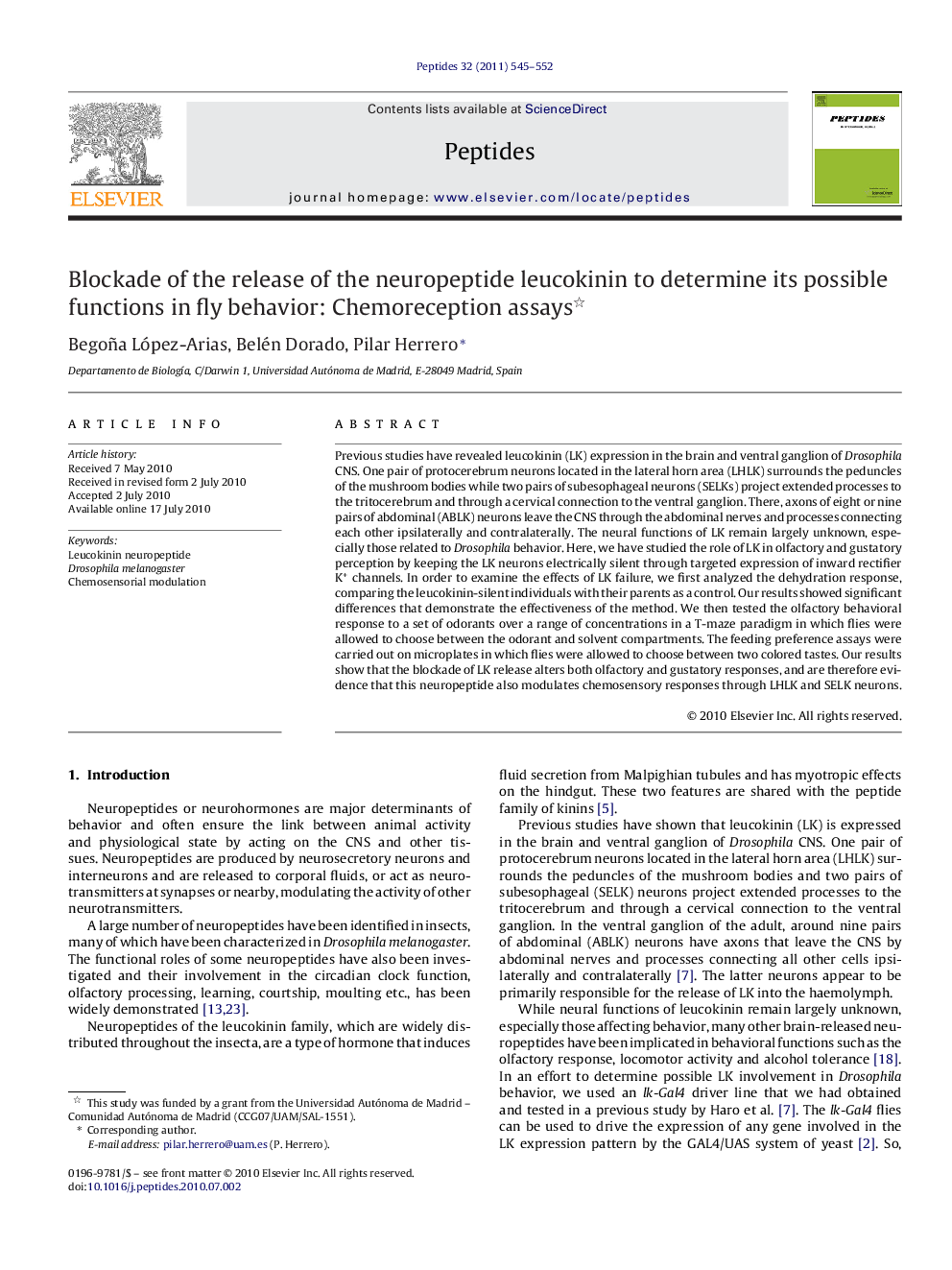| Article ID | Journal | Published Year | Pages | File Type |
|---|---|---|---|---|
| 2006411 | Peptides | 2011 | 8 Pages |
Previous studies have revealed leucokinin (LK) expression in the brain and ventral ganglion of Drosophila CNS. One pair of protocerebrum neurons located in the lateral horn area (LHLK) surrounds the peduncles of the mushroom bodies while two pairs of subesophageal neurons (SELKs) project extended processes to the tritocerebrum and through a cervical connection to the ventral ganglion. There, axons of eight or nine pairs of abdominal (ABLK) neurons leave the CNS through the abdominal nerves and processes connecting each other ipsilaterally and contralaterally. The neural functions of LK remain largely unknown, especially those related to Drosophila behavior. Here, we have studied the role of LK in olfactory and gustatory perception by keeping the LK neurons electrically silent through targeted expression of inward rectifier K+ channels. In order to examine the effects of LK failure, we first analyzed the dehydration response, comparing the leucokinin-silent individuals with their parents as a control. Our results showed significant differences that demonstrate the effectiveness of the method. We then tested the olfactory behavioral response to a set of odorants over a range of concentrations in a T-maze paradigm in which flies were allowed to choose between the odorant and solvent compartments. The feeding preference assays were carried out on microplates in which flies were allowed to choose between two colored tastes. Our results show that the blockade of LK release alters both olfactory and gustatory responses, and are therefore evidence that this neuropeptide also modulates chemosensory responses through LHLK and SELK neurons.
Research highlights▶ Suppression of leucokinin-releasing affects the longevity in Drosophila. ▶ Suppression of leucokinin-releasing affects the resistance to dry starvation. ▶ Leucokinin modulates the olfactory response in Drosophila. ▶ Leucokinin is required for response to trehalose and bitter tastants in Drosophila.
